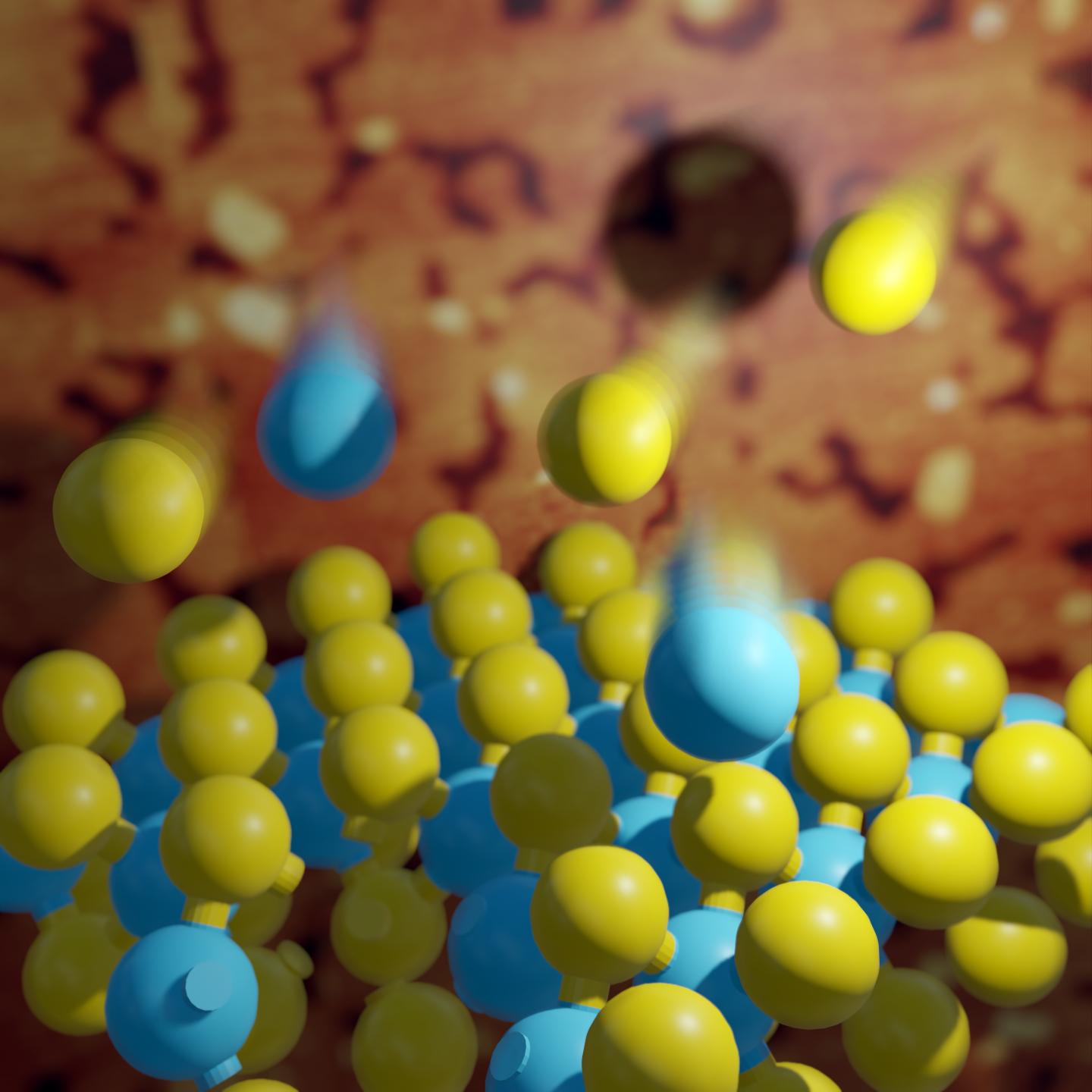Using MBE to grow 2D crystals with excellent optical properties

Warsaw physicists develop technique for growing 2D TMDs that will allow for the production of monolayers with a large surface area
A team of physicists from the University of Warsaw have grown monolayers of transition metal dichalcogenides (TMDs) with excellent optical properties. Using MBE on atomically flat BN substrates, they managed to overcome the technical difficulties of limited size, heterogeneity, and broadening of the spectral lines of fabricated materials that have so far confounded other researchers. The results were published in Nano Letters.
2D crystals with a honeycomb structure, including the famous graphene, show huge promise for future electronic and optoelectronic applications. However, despite substantial investments in the development of growth techniques for atomically thin crystals, the best quality monolayers are currently still obtained using exfoliation, i.e. due to the mechanical detachment of individual atomic layers from the bulk crystal.
For example, graphene flakes exfoliated from bulk graphite exhibit superior electrical properties when compared to grown graphene. In contrast, the size of the mechanically exfoliated monolayers is rather small.
Similarly, optical properties of 2D TMDs (such as MoSe2) are fully revealed only for layers obtained as a result of exfoliation and after having been subjected to further mechanical treatment, such as placing them between layers of BN. However, as already mentioned, this technique does not lead to atomically thin crystals on a larger scale, resulting in heterogeneity, limited size, and even to the appearance of corrugations, bubbles, and irregular edges.
Hence, it is crucial to develop a technique for growing 2D TMDs that will allow for the production of monolayers with a large surface area. Currently, one of the most advanced technologies for producing thin semiconductor crystals is MBE. It provides low-dimensional structures on large wafers, with high homogeneity, but its effectiveness in the production of TMDs has been very limited so far. In particular, the optical properties of MBE grown monolayers have hitherto been rather modest, e.g. spectral lines have been broad and weak, giving no hope for the use of the spectacular optical properties of TMDs on a larger scale.
It is in this area that researchers from the Faculty of Physics of the University of Warsaw made a breakthrough. In collaboration with several laboratories from Europe and Japan, they conducted a series of studies on the growth of TMDs monolayers on an atomically flat BN substrate. In this way, using the MBE method, they obtained flat crystals, equal in size to the substrate, showing uniform parameters over the entire surface, including - most valuably - excellent optical properties.
The picture above is an artistic visualisation of a monolayer of 2D MoSe2 grown by directing molecular beams of selenium (yellow) and molybdenum (blue) on atomically flat hexagonal BN substrate. Thanks to this substrate, MoSe2 epilayer exhibits excellent optical properties.
The discovery directs future research into the industrial production of atomically thin materials. In particular, it indicates the need to develop larger atomically flat BN wafers. On such wafers, it will be possible to grow monolayers with the optical quality, dimensions, and homogeneity required for optoelectronic applications.
'Narrow Excitonic Lines and Large-Scale Homogeneity of Transition-Metal Dichalcogenide Monolayers Grown by Molecular Beam Epitaxy on Hexagonal BN' by
W. Pacuski et al; ACS Nano Lett. 20, 3058 (2020).


































